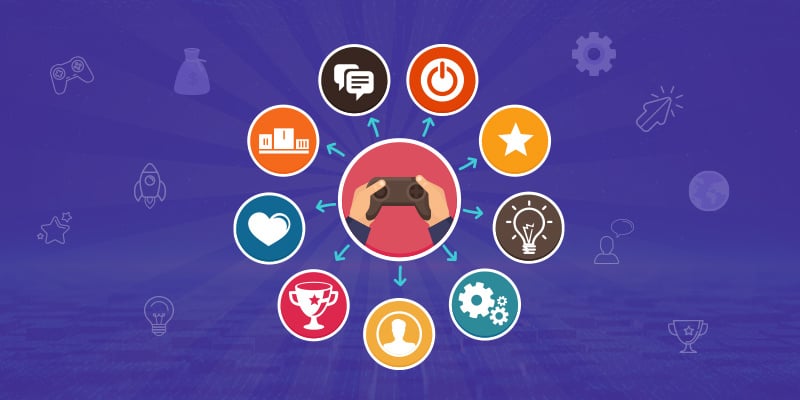
Gamification has become a widely used technique in modern learning, but teachers have used games for millennia. Even the Socratic Method in Plato’s dialogues is a form of gamification designed to motivate learners. The methods used to issue grades, class rank, and academic honors have existed for centuries.
Nick Pelling, a British-born computer programmer and inventor, coined the term in 2002, but it wasn’t until 2011 that Gartner added it to its Hype Cycle list. Since then, gamification has become widely used in learning, marketing, and many other disciplines where we want to influence behavior.
Marketers have been using gamification since long before Cracker Jacks (a prize in every box!), and now it is everywhere we shop. In the corporate work context, it is popular in sales and customer service.
Gamification by Domain
SumTotal enabled gamification by domain beginning with SumTotal 19.2. Administrators can now set up Rule sets that award points, badges, and levels for taking part in:
- Learn activities, courses, and modules.
- Talent workflows, such as 360 feedback and coaching; and
- Social activities like blogs and shares.
Here’s a quick review on how to enable gamification by domain.
- Enable gamification settings in the Global domain by in the Gamification Configuration workspace. You can then use gamification differently in child domains.
- Control whether a domain inherits gamification from its parent domain by checking or unchecking Inherit parent domain settings in Gamification Configuration. If you choose not to inherit, you can configure the current domain (the one you are in) with its own Rulesets.
- You can disable gamification for any domain in the hierarchy.
Get the complete instructions in the SumTotal Core Platform Administrator Guide, Version 19.2, available at SumTotal Connect.
Social and Cultural Impact of Gamification
Although this improvement may seem like a minor change, it can have a significant impact on your organization. This change came about because global customers said they could not use gamification without the ability to manage it by domains.
Here’s why. A game element designed to affect a specific objective is affected by individual reactions and the personal and social context. Those factors influence an individual’s participation, behavior changes, and the outcome.1
National cultures, organizational cultures, and even micro-cultures within organizations can drive different reactions to gamification techniques.
- Competing with one’s coworkers may be unacceptable in some cultures.
- Being singled out as a high achiever may have negative social consequences in some contexts.
- Some subcultures may view gamification as “manipulation” and resist participation.
Before you Flip the Switch
We recommend careful planning and preparation before you start, even if your workforce is homogeneous. Introducing gamification is an organizational change that you must manage if you want positive results.
Align gamification to the business. A successful gamification project requires the support of your top executives. Points, badges, and levels will have no meaning unless your leaders recognize them as valuable to the organization and recognize the achievements. There must be a connection between the activity and organizational performance.
Align to your culture. Tap into the cultural norms of your workforce and let those norms be your guide.
Involve end users in the design. More than just gathering input, this means bringing end users into Rule sets development. The tendency may be to involve only enthusiasts, but skeptics can be valuable in helping you avoid missteps.
Measure results and redesign. Gamification activities create a lot of valuable data. Use it to refine your program.
Let Culture Be Your Guide
Gamification is a powerful tool but used incorrectly it can have negative consequences. Consider your culture and its subcultures before you act. Bring your people into the design so they can guide your efforts.
References :
1. Landers, Richard N., Elena M. Auer, Andrew B. Collmus, and Michael B. Armstrong. "Gamification Science, Its History and Future: Definitions and a Research Agenda." Simulation & Gaming: An Interdisciplinary Journal of Theory, Practice and Research 49.3 (2018): 315-337
PhenomᵉCloud is a comprehensive technology solutions provider committed to empowering businesses to overcome challenges, enhance their workforce capabilities, and achieve superior outcomes.


Leave a Comment